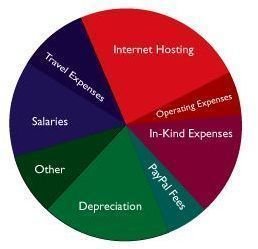Single Entry vs Double Entry Bookkeeping: What's the Difference?
What is Bookkeeping?
Every business, even sole proprietorships, needs to keep track of sales, expenses and profits. To do this, a bookkeeping or record keeping system must be in place to ensure accurate financial data.
Even the smallest business like a one-person house painting business needs to keep track of how much revenue they’ve earned and the cost of that earned revenue. In bookkeeping, books or general ledgers are utilized to records sales, cost of sales, expenses, job costing journal entries, and other financial data such as cash in bank.
Single Entry Bookkeeping
Much like its name, single entry bookkeeping generally requires one general ledger where all business transactions are recorded. A single entry general ledger may include journal entries as follows:
Date / Description / Running Total (or Balance)
- 5/1 / Beginning Balance - $2,000 / $2,000
- 5/2 / Paint House - $500 / $2,500
- 5/3 / Bought Paint – ($200) / $2,300
- 5/4 / Paid Insurance – ($100) / $2,200
- 5/7 / Deposit - $500 / $2,700
Think of single entry bookkeeping like a checkbook register where all your checks written reduce your balance and all deposits increase your balance.
Double Entry Bookkeeping

Double entry bookkeeping, on the other hand is more complex. It involves determining which accounts your transactions should be posted to and can involve more than one ledger, journal, and even schedules. An example of double entry journal bookkeeping would look like this:
Date / Description / Account / Debit / Credit
- 5/1 / Paint House / 400 / Credit of $500
- 5/1 / Cash in Bank / 100 / Debit of $500
- 5/2 / Bought Paint / 110 / Debit Paint Inventory $300
- 5/2 / Accounts Payable / 201 / Credit of $300
- 5/4 / Check 1001 to Pay Insurance / 100 / Credit to Cash in Bank
- 5/4 / Paid Insurance / 300 / Debit to Insurance Expense
In addition, double entry bookkeeping can have multiple entries for one check written. For example:
Date / Description / Account / Debit / Credit
- 5/1 / Check 1001 Buy Paint & Supplies/Pay Vendor / 100 / $1,500 Credit Cash in Bank
- 5/1 / Paint Inventory / 110 / $500 Debit to Paint Inventory
- 5/1 / Paint Supplies / 120 / $500 Debit to Paint Supplies
- 5/1 / Pay Paint Vendor / 201 / $500 Debit Accounts Payable
As you can see, that one check written for $1,500 decreased the cash in bank, increased paint inventory and supplies and cleared an accounts payable for the paint vendor. In addition, you must pay attention to debits and credit so your transaction equal. In our example above, the debits equal $1,500 and the Credit equals $1,500.
In double entry bookkeeping the journal entries made to your general ledge pull to your trial balance which is utilized to create your income statement and ultimately your monthly balance sheet.
Which Bookkeeping System is Better?
When comparing single entry vs. double entry bookkeeping, you should consider the type of business you own. A small sole proprietorship may not require an advance or double entry bookkeeping system such as a home-based business.
On the other hand, if you write many checks, have more than one bank account along with lots of accounts receivable and payables, you may want to consider utilizing the double entry bookkeeping system.
Finally, when considering bookkeeping systems for your business there are many accounting software solutions available. Some are great for the double entry bookkeeping such as Quickbooks where other accounting software is good for the very small or home-based business.
